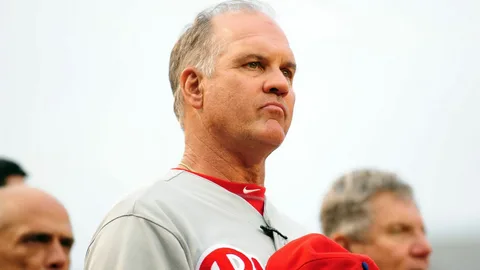Introduction
Baseball has seen its share of loud personalities and larger-than-life superstars. But every once in a while, a player comes along who commands respect not with noise, but with quiet excellence. Ryne Sandberg was that kind of player.
A legendary second baseman, primarily known for his time with the Chicago Cubs, Sandberg made a lasting mark on the game through hard work, humility, and unmatched consistency. His legacy continues to influence players and fans alike, decades after his retirement.
Early Years and Unexpected Beginnings
Ryne Sandberg was born in Spokane, Washington, in 1959. He showed athletic promise early on and was drafted by the Philadelphia Phillies in 1978. At first, there were no signs he would become a star. He wasn’t a top pick, and he didn’t make headlines in his first seasons.
Then, in 1982, the Phillies traded Sandberg to the Chicago Cubs. It was considered a minor trade at the time. But what looked like a simple roster move turned into one of the most important trades in Cubs history.
Breakthrough in Chicago
Sandberg began his Cubs career playing third base, but he quickly found his place at second. It didn’t take long for fans and coaches to realize they had something special. He was fast, reliable, and played with a calm confidence that set him apart.
In 1984, he had a breakout year. Not only did he win the National League Most Valuable Player (MVP) award, but he also helped lead the Cubs to their first playoff appearance in 39 years. One game from that season became legendary. Against the rival St. Louis Cardinals, Sandberg hit two dramatic home runs off star closer Bruce Sutter, tying the game both times. It’s still known as “The Sandberg Game” and remains one of the most exciting moments in Cubs history.
A Model of Consistency
Throughout his 16-year career, mostly with the Cubs, Sandberg became known for doing everything well. He was a ten-time All-Star, won nine Gold Gloves for his defense, and took home seven Silver Slugger awards for his hitting.
He finished with a career batting average of .285, over 2,300 hits, and more than 280 home runs—an impressive total for a second baseman during his era. But more than numbers, Sandberg earned praise for the way he played the game. He showed up every day, played hard, and never acted bigger than the team.
He wasn’t flashy. He didn’t seek the spotlight. Yet, teammates, opponents, and fans respected him deeply.
Hall of Fame and Life After Baseball
In 2005, Sandberg was inducted into the National Baseball Hall of Fame. His speech was heartfelt and sincere. He spoke about the importance of respecting the game, putting the team first, and being a professional on and off the field.
After retiring, Sandberg remained involved in baseball. He managed in the minor leagues and later became the manager of the Philadelphia Phillies, the team that originally drafted him. While his time as a manager had mixed results, he continued to share his knowledge and passion for the game.
Legacy of a Quiet Leader
What makes Ryne Sandberg special isn’t just what he achieved, but how he achieved it. He led by example. He didn’t need to talk about how good he was—he just went out and proved it day after day.
In an era where some athletes chase headlines, Sandberg reminded everyone that character, discipline, and consistency still matter. He showed that you don’t need to be loud to be a leader, and you don’t need to seek fame to become a legend.













Comments are closed